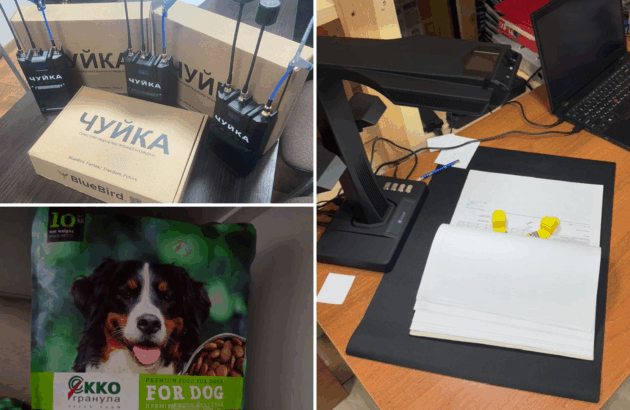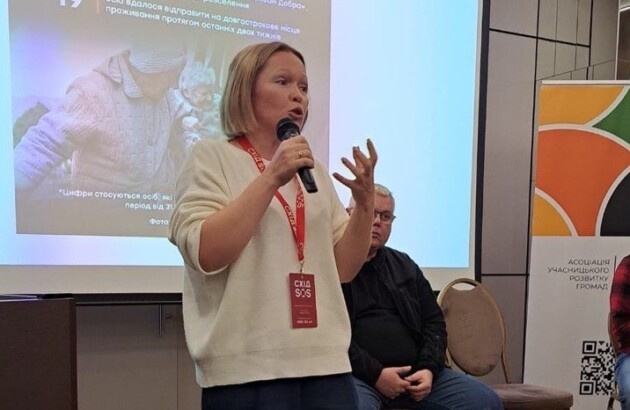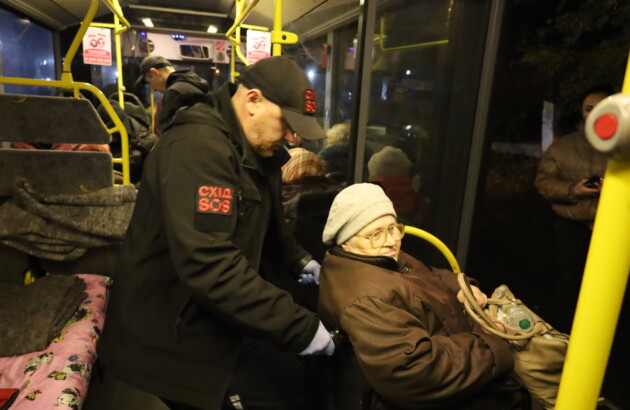CRITICAL BUT STABLE:
THE STATE OF PREPAREDNESS OF HEALTHCARE FACILITIES IN LUHANSK REGION FOR THE COVID-19 EPIDEMIC
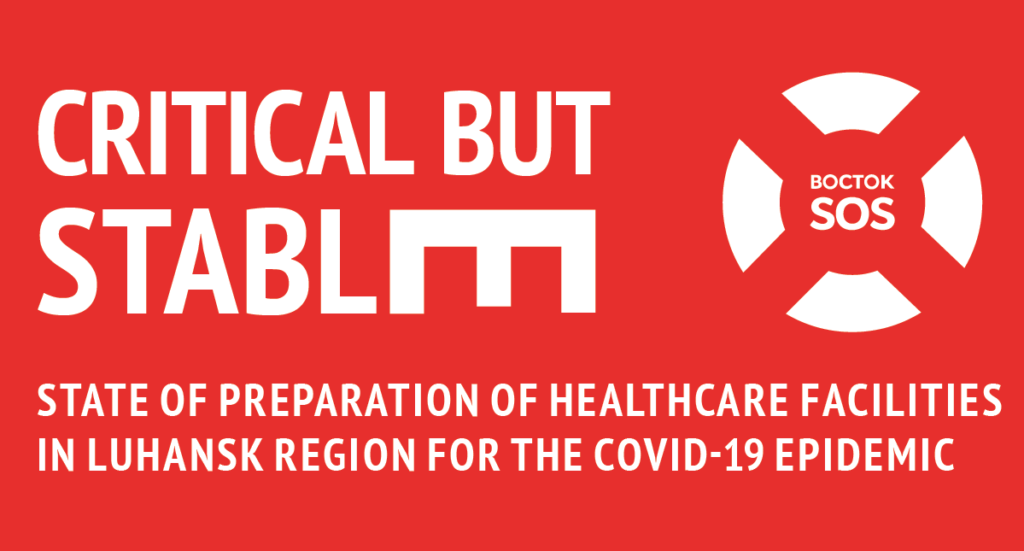
Download the full PDF report
View the full report online
CONTENT
1. Introduction
2.1 Critical shortage of healthcare workers
2.2 Low awareness of medical staff about operating procedures in case of identifying patients with COVID-19 symptoms
2.3 Shortage of personal protective equipment and disinfectants
2.4 Shortage of reanimation equipment
2.5 Shortage of diagnostic tools
2.6 Insufficient number of beds in infectious disease units
2.7 Insufficient preventive measures and awareness raising on epidemic prevention in Luhansk region
2.8 Misrepresentation of the actual state of preparedness for the coronavirus epidemic by government agencies
3. Conclusions and recommendations
1. Introduction
Every country proves itself in a crisis situation. The COVID-19 epidemic in Ukraine could possibly become the litmus test that will show the effectiveness of the Ukrainian government and the social cohesion. Now is the best time to determine the willingness of government bodies and local self-governments to take responsibility, the readiness of medical staff to speak openly about the needs, the willingness of society to adhere to hygiene and quarantine rules, take care of each other and help each other, and mobilize for common solutions to complex challenges in the event of a crisis.
The aim of the monitoring conducted by the Charitable Foundation “Vostok SOS” from March 22 to 25 was to determine the preparedness of medical institutions and state administrations of the Luhansk region for the COVID-19 epidemic. Members of the monitoring group investigated the state of logistical support, the level of medical staffing, the availability of critically needed preventive and therapeutic means, the mental and emotional state of doctors and officials responsible for coordinating emergency response. The monitoring team also drew attention to quarantine measures implemented by local administrations, efforts to identify potential carriers of the virus and communication of state administrations with local communities.
The purpose of the monitoring was to identify urgent needs and weaknesses of the healthcare system in the Luhansk region to further unite the efforts of the public, commercial and civil society sectors, in order to effectively counteract the spread of the COVID-19 epidemic and overcome its negative economic and social consequences.
As part of the monitoring, the group visited 12 medical institutions in the Luhansk region, namely:
City Hospital in Shchastya, Primary Healthcare Center in Shchastya, Central District Hospital in Popasna, Hirske Hospital «Popasna Central Regional Hospital», Popasna District Center for Primary Healthcare, Starobilsk District Territorial Medical Association, Stanytsia Luhanska Regional Territorial Medical Association, the affiliated «Petropavlivsk Hospital of Stanytsia Luhanska Regional Territorial Medical Association», Rubizhne Central City Hospital, Severodonetsk City Multidisciplinary Hospital, Lysychansk Multidisciplinary Hospital.
The research was conducted using semi-structured interviews. During the fieldwork, the monitoring group collected 59 interviews with medical professionals, administrative staff of medical institutions, officials of state structures and local self-government bodies, patients and local residents.
Analyzing the information collected during the fieldwork, the monitoring team identified eight key issues for the attention of the Ukrainian government and civil society.
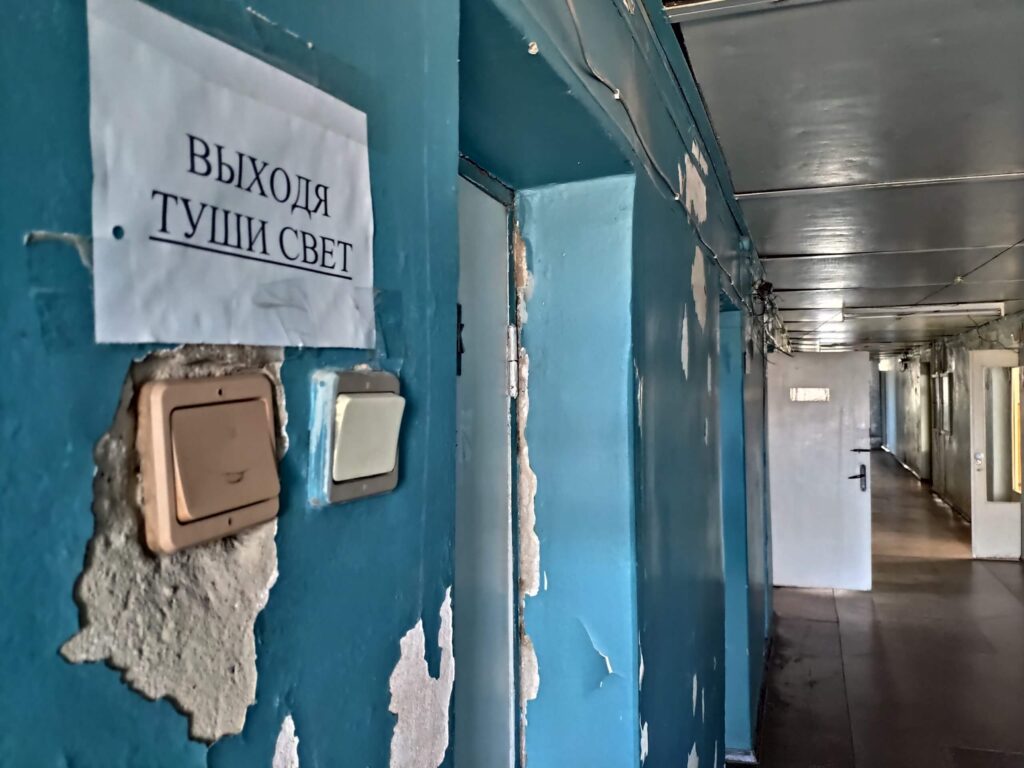
2.1 Critical shortage of healthcare workers
While communicating with healthcare providers, the Vostok SOS team noted a critical shortage of healthcare staff in medical facilities. On average, hospitals in the Luhansk region are only staffed up to 60% with skilled medical personnel. In settlements near the contact line this figure is much lower. First of all, there are not enough specialized doctors – infectious specialists and intensivists. For example, there is only one infectious disease specialist working at the infections unit in Rubizhne Сity hospital (currently designated as the main hospital). According to the chief physician, there should be at least three such specialists for every 50 patients for the effective operation of the unit during the outbreak. The regional state administration plans to strengthen the Hospital in the Rubizhne with additional medical staff, but are unable to answer where from they plan to recruit additional doctors when there is a general shortage of medical staff in the region. Based on the information collected, the monitoring group concluded that the regional leadership is not prepared for realistic scenarios to solve this problem.
The high average age of the doctors further complicates the situation. The oldest specialist working in one of the hospitals surveyed by the participants of the monitoring mission is now 72 years old. Due to the large percentage of healthcare workers belonging to the age group of risk, in the event of a rapid spread and severe epidemic, a significant number of staff will be at risk.
Another aspect is that the medical staff do not have the necessary skills in the use of diagnostic and reanimation equipment, which reduces the chances of patients with COVID-19 complications.
Recommendations
The Ministry of Health should take action to mobilize volunteers among those who have a medical education and necessary skills and experience but are currently not working in the healthcare sector.
The Ministry of Health needs to create a reserve pool of qualified medical specialists, who can be directed to regions where the situation with the spread of COVID-19 infection will be most critical.
The Ministry of Reintegration of the Temporarily Occupied Territories and the Ministry of Health should develop and propose a bill for the consideration of the Cabinet of Ministers of Ukraine, which will provide additional incentives for healthcare personnel working in settlements close to the contact line funded by the state budget of Ukraine.
Luhansk regional state administration, the local self-governments and civil-military administrations of settlements and districts ought to provide preferential (or free) housing to medical workers who come to work in the Luhansk region from other regions of Ukraine.
State institutions and specialized humanitarian organizations should organize systematic work to improve the skills of existing medical staff as soon as possible.
Equipment, vehicles and medical personnel from military hospitals that are not currently in use on a regular basis should be taken into operation to assist patients with coronavirus symptoms.
Cooperation between volunteer paramedical services that have their own transport, equipment and trained personnel and state medical institutions should be encouraged.
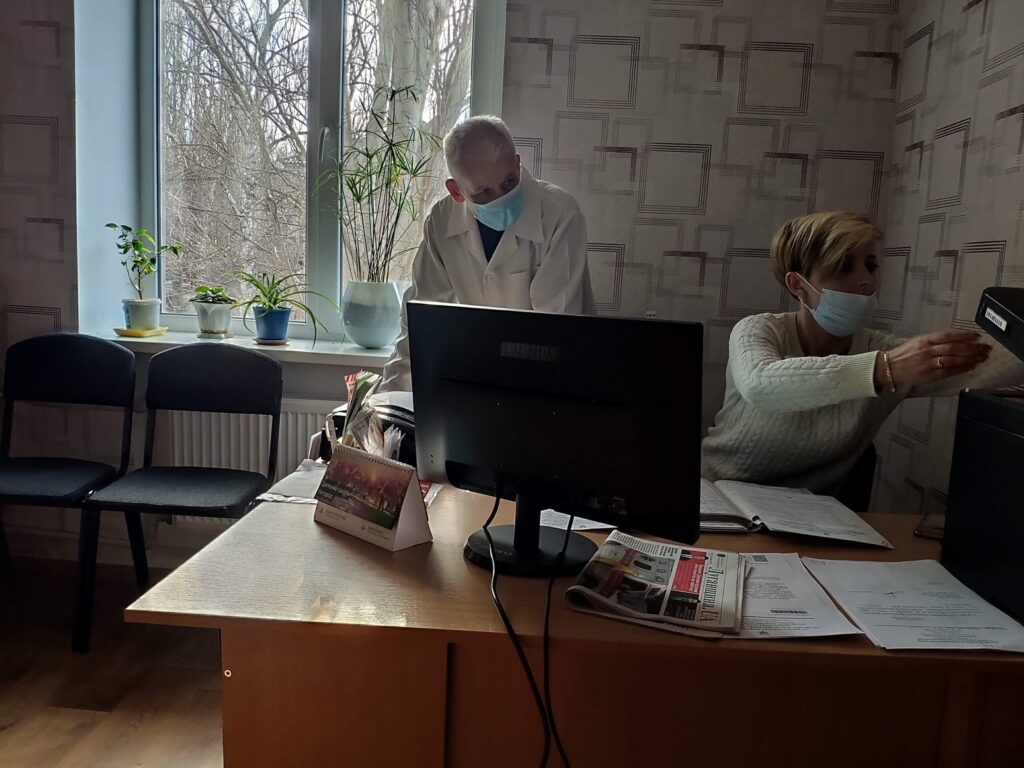
2.2 Low awareness of medical staff about the operating procedures in case of identifying patients with COVID-19 symptoms
Information on the algorithm of proceedings when detecting cases with COVID-19 symptoms provided to the monitoring team by officials and healthcare staff in different settlements of the region varies significantly. This indicates either a low level of awareness of the medical staff and officials about the plans for the epidemiological measures or the lack of such approved plans.
Accordingly representatives of the Stanichno-Luhansk District Council disseminate information that patients from Stanichno-Luhansk District with COVID-19 symptoms will be hospitalized in the infection department of the Petropavlivsk town hospital. But this information has been disproved by the medical workers of Stanichno-Luhansk Central District Hospital and the Petropavlivsk department. According to their words, neither the Petropavlivsk nor the Central District Hospital are adapted to these patients, thus, those who are infected with COVID-19, will be sent to the Rubizhne Central City Hospital. Simultaneously Stanichno-Luhansk District Hospital is determined by the regional state administration as one of the seven designated hospitals which will receive COVID-19 infected persons.
The medical staff of town hospitals in the Popasna district are convinced that in case of detection of patients with coronavirus symptoms, they will be hospitalized at the Lysychansk Central City Hospital. However, this is not confirmed by the administration of the Lysychansk Hospital, because according to their information, detected patients not only in Popasna district but also in Lysychansk, will be placed in the infection department of Rubizhne Central City Hospital during the first wave of the epidemic.
The members of the monitoring mission noted that ambulance workers in Novoidar and Popasna districts were not exactly informed where to send patients with COVID-19 symptoms, although most of them refer to the Rubizhne Central Hospital. Also, ambulance staff do not give a clear answer whether specialized ambulance crews will be formed, that will work only with cases of suspected coronavirus infection, as stated by representatives of Luhansk regional state administration.
These and other collected facts point to the improper planning or that the healthcare workers are poorly informed about the standard operating procedures within the measures to counter the spread of the epidemic.
Recommendations
For the Regional State Administration: To develop clear and detailed operating procedures for all departments involved in counteracting the epidemic, indicating the tasks of each unit. The course of actions for each staff should be properly designed and communicated to employees of all units. Coordinating bodies should monitor the transmission of these plans to employees and evaluate the readiness of units at all levels to implement these plans.
For the Ministry of Health and the Department of Health of the Luhansk regional state administration: Taking into account the workload and age of medical personnel working in the field, provide a prompt translation of scientific articles from foreign languages on the symptoms, diagnostics and treatment options of COVID-19 complications, with the possibility of sharing the materials electronically as well as printing them out.
For the Ministry of Health and the Department of Health of Luhansk regional state administration: To provide contacts and allocate hours for the consultation of doctors in Luhansk region with infectious diseases specialists and virologists in Ukraine for exchange of information and support of medical workers who are in remote settlements without the possibility to of quickly monitoring the latest information on the Internet.
Civil society organizations should conduct a continuous assessment of the readiness of public institutions (primarily medical) to counter the epidemic by collecting, verifying, summarizing and disseminating this information so that representatives of all sectors can adequately assess the current state of preparedness of regional infrastructure to contain the outbreak.
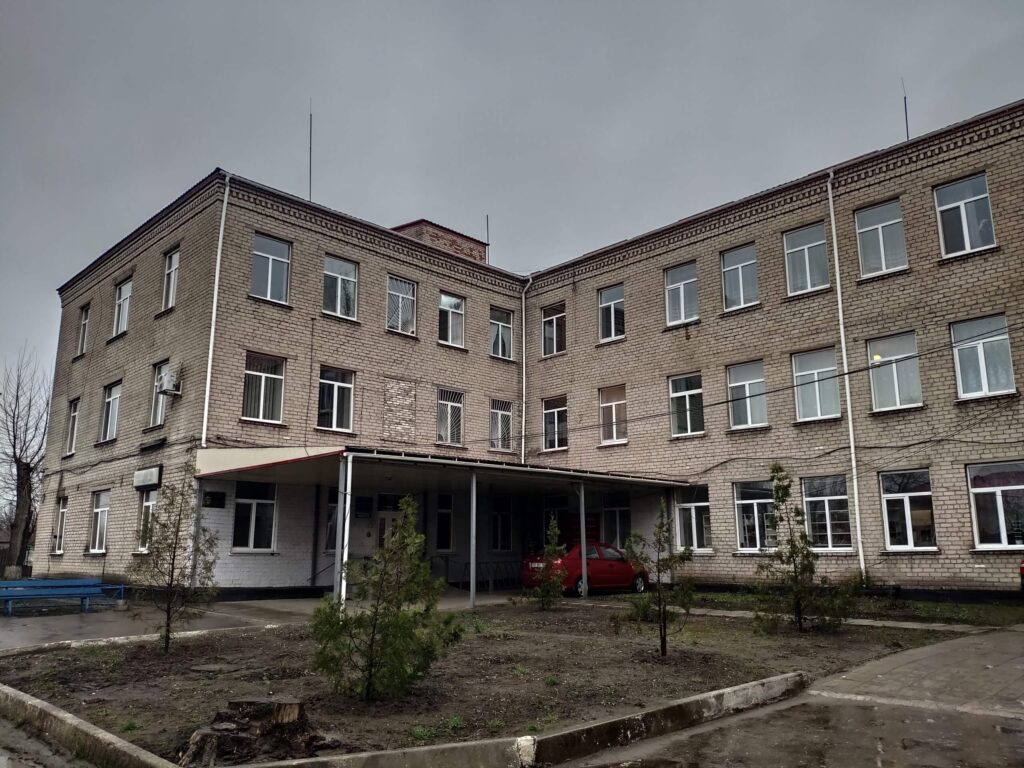
2.3 Shortage of personal protective equipment and disinfectants
First and foremost, it is important to protect all medical staff (from doctors to hospital attendants) as they have the first contact with people with suspected or confirmed COVID-19 diagnosis. Through communication with healthcare professionals, the Vostok-SOS team has identified a severe shortage of personal protective equipment (PPE), especially for hospitals located in settlements near the demarcation line. For example, not only protective suits, but also surgical masks are completely missing in the hospital in Petropavlivka. At Hirske Hospital, doctors use cotton and gauze fabric masks made by local residents because they do not have enough masks from the Ministry of Health. There are no biological protection suits currently available at this hospital. The ambulance station in Shchastya does not have respirators, has a critically small stock of surgical masks, which does not allow to change them every 2-4 hours, hazmat suits are also absent there. The Popasna Ambulance Station, which serves most of the Popasna district, has only 3 hazmat suits, which are sufficient to transport only one patient with suspected coronavirus, which, according to the ambulance station’s health workers, is approximately 3% of the volume required in case of epidemic. According to the estimations of the participants of the monitoring mission, even hospitals that have received personal protective equipment, will find themselves in a shortage of PPE in the near future.
Recommendations
The government should provide PPE to all designated hospitals, city hospitals, district hospitals, first aid points and ambulance stations, calculating their number in accordance with international standards and practices for combatting the COVID-19 epidemic.
Regional institutions should publicly encourage commercial sector representatives to actively participate in supplying medical facilities in the region by drawing up a list of enterprises in the Luhansk region ready to start producing the necessary protective equipment, and developing a plan to provide enterprises with the necessary raw materials in accordance with international standards and global practices combatting a pandemic.
In case commercial enterprises are unwilling to respond to such a call, individual tailoring by community residents should be encouraged, subject to quality control by representatives of the health department of the Luhansk regional state administration.
In the event that these resources are insufficient, the authorities should seek assistance from intergovernmental organizations, international humanitarian missions and large multinational corporations.
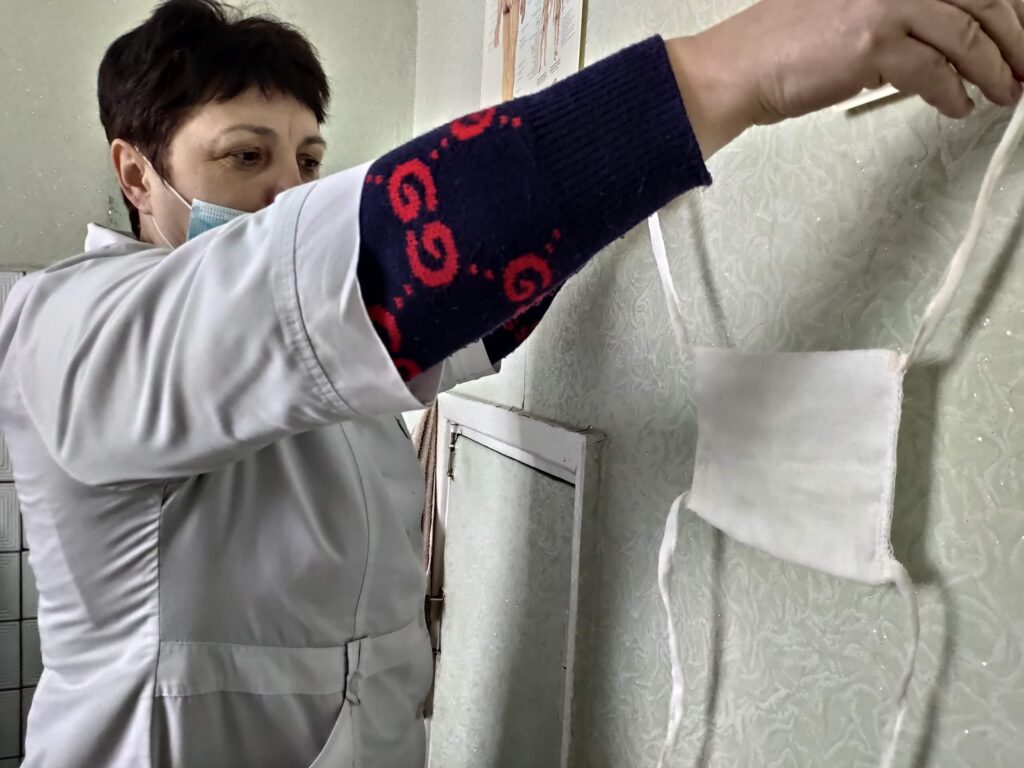
2.4 Shortage of reanimation equipment
All the medical personnel, without exception, of all health facilities visited by the monitoring group pointed to the shortage or complete absence of reanimation equipment required for intensive care in cases of COVID-19 complications. There are not enough and in some places complete a lack of ventilators, oxygen concentrators, pulse oximeters, patient monitors etc. For example, the infectious department of Rubizhne Central City Hospital which will receive the largest number of patients in the beginning of the epidemic, has four stationary and one mobile artificial lung ventilation units as of March 25. According to the director of this utility company, taking into consideration the dynamics of the epidemic, 50 patients who are likely to be admitted to the hospital in the near future will need at least five ventilators.
At the same time, the monitoring revealed that hospitals that do not plan to receive patients with COVID-19 complications, have the same or even a greater number of mechanical ventilators than the main designated Rubizhne Central City Hospital. For example, Popasna Central District Hospital has seven ventilators, two of which are installed at the branch hospital in Hirske, which has extremely poor material and technical support, only two doctors and does not have the capacity to accommodate patients with COVID-19 symptoms.
According to the hospital administration, only the designated hospitals in Severodonetsk and Starobilsk are equipped with a relatively sufficient level of reanimation equipment.
Recommendations
A detailed assessment of all available reanimation equipment should be carried out and the availability of specialists able to use it. If necessary, additional training should be conducted for medical workers.
Assess the need for artificial ventilators and oxygen concentrators in hospitals that are not essential for localizing the coronavirus epidemic, redistribute excess equipment to designated hospitals, while taking into account the needs of patients with other diseases.
Redistribute funds from regional and local budgets in order to purchase necessary intensive care equipment as a matter of urgency.
Actively involve local entrepreneurs for charitable assistance.
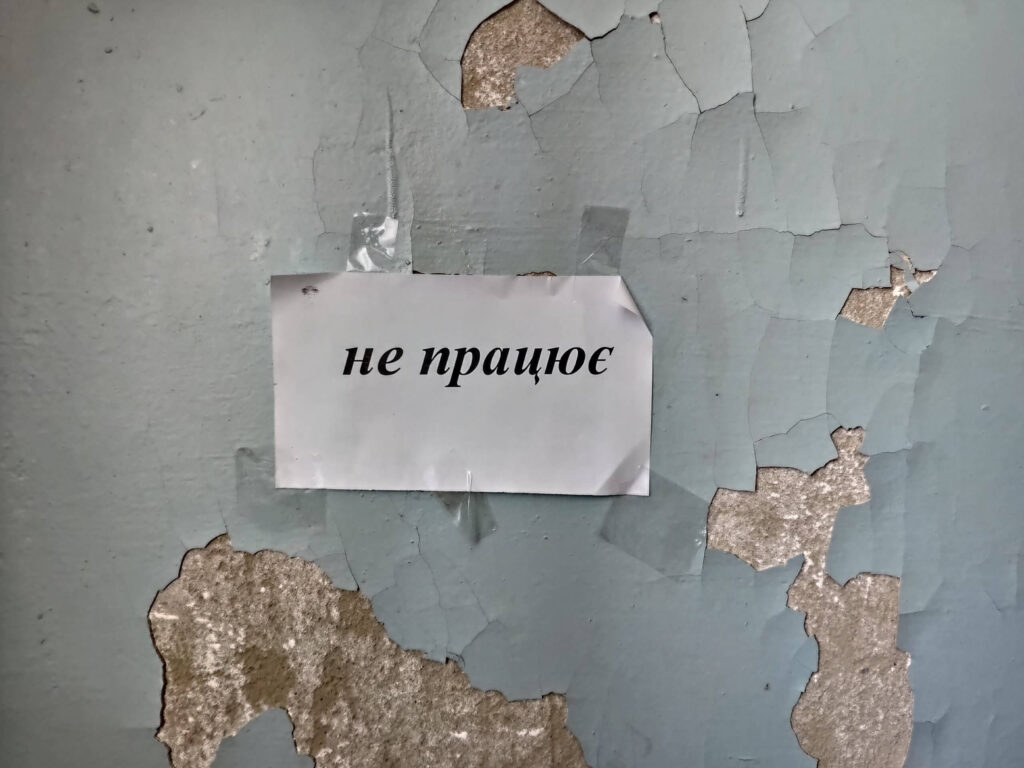
2.5 Shortage of diagnostic tools
Employees of all hospitals visited by the monitoring group point to the shortage of diagnostic tools – rapid tests and PCR tests and contactless thermometers. Some of these items are completely absent in urban and small town hospitals.
None of the healthcare facilities visited by the monitoring group had rapid tests or PCR tests. During a briefing on March 24, representatives of the Luhansk regional state administration informed journalists and community members that 5,000 rapid tests and 1,728 PCR tests had been received in the Luhansk region and soon they would be distributed to medical institutions. Probably, only designated hospitals have a chance to receive rapid tests. Other hospitals and ambulance stations would then not be able to carry out rapid diagnostics.
The practice of European countries and China shows that the sooner you start testing and isolating people who have the disease, the easier it is to control the spread of the virus. Now we are witnessing a situation where tests are done only for people with an exacerbation, those who have had contact with an infected person or have returned from abroad. The reason is a shortage or complete absence of tests as well as the availability of these only in designated hospitals.
The availability of such diagnostic tools as contactless thermometers and pulse oximeters in hospitals would allow for the detection of suspected cases of disease much earlier and would reduce the risk of coronavirus infection by healthcare workers. Unfortunately, according to the observations of the monitoring group, most of the medical facilities in Luhansk oblast lack these items.
Recommendations
Resources of international humanitarian aid and funds provided by the commercial sector in response to the epidemic should partially be directed towards the procurement of diagnostic items.
It is necessary to open PCR laboratories as soon as possible as well as testing points in districts of Luhansk region and to provide them with excess tests.
Early diagnosis and detection of patients with COVID-19, their isolation and monitoring of their health will not only reduce the number of infections but also minimize fatalities.

2.6 Insufficient number of beds in infectious disease units
As of March 24, the Health Department of the Luhansk regional state administration ordered the preparation of 185 beds for hospitalization of patients with suspected coronavirus in the infectious disease units of seven designated hospitals: Rubizhne Central Hospital, Severodonetsk Multidisciplinary Hospital, Markov Multidisciplinary Hospital, Milovsky Central Regional Hospital, Novopskov District Medical Association, Starobilsk District Territorial Medical Association and Stanytsia Luhanska Regional Territorial Medical Association. The designated beds are obviously not enough if the development of the epidemic reaches Italian proportions – for hospitalization for patients with complications it will be necessary to have ten times more beds, doctors and intensive care units than is available from the regional health department.
At the same time, the staff of at least one of the health department’s designated hospitals – Stanytsia Luhanska Regional Territorial Medical Association – informed the members of the monitoring mission that the medical facility is not prepared to receive patients with symptoms of COVID-19 due to shortage of medical staff, equipment and technical support.
Representatives of the Luhansk regional state administration assure that the designated hospitals will soon be ready to expand up to 600 beds in total, but the staff and representatives of the administrations of the designated hospitals with whom the mission members managed to communicate did not confirm this information.
Recommendations
An appropriate step would be to prepare medical facilities in settlements closest to the reference hospitals before transferring patients from other departments of the designated hospitals to those that may soon need to be reassigned for hospitalization of patients with COVID-19.
It is already now necessary to look for and minimally equip other facilities suitable for receiving patients in case the epidemic spreads faster than predicted.
In case of lack of state resources, the authorities should encourage cooperation with commercial and industrial real estate businesses. It is important in this case to calculate and start purchasing the necessary equipment to arrange additional beds for patients.
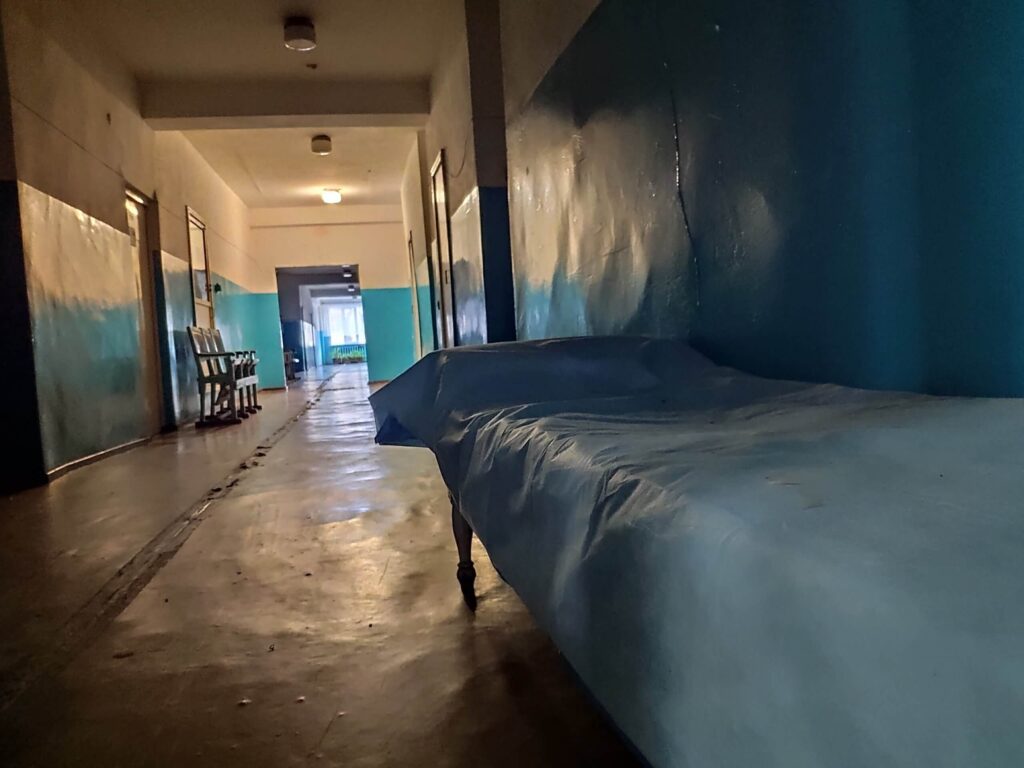
2.7 Insufficient preventive measures and awareness raising on epidemic prevention in Luhansk region
The members of the monitoring mission found a relatively low level of compliance with the quarantine measures by the population of the Luhansk region. The available information with prevention recommendations in urban areas is only visible in the oblast center and in several major cities. Many people do not adhere to the recommendations of self-isolation and do not wear protective masks if they go on the streets and in public places. There who are in the risk group are still on the streets; children continue to play on many playgrounds; and in private educational institutions classes are still being carried out.
The monitoring team noted that even most of the doctors and staff at the Rubizhne Central City Hospital, where two patients suspected of having coronavirus infection had already been hospitalized (one of whom was confirmed to have the disease the next day), do not wear protective masks. Doctors of other medical institutions and some police officers did not use masks when communicating with the members of the monitoring mission. In some cases, for example, at the hospital in Stanytsia Luhanska, doctors explained that they were not wearing a mask due to shortage of PPE and the fact that it was difficult for them to wear the mask for several hours in a row.
Instead of following the recommendations of the Ministry of Health, the regional state administration, according to the participants of the mission, violates quarantine activities itself by organizing briefings at the press center of Luhansk regional state administration with the participation of dozens of journalists and civic activists, instead of informing the population on the status of the preparation for the epidemic online. At the same time, the mission participants noted that a large number of those present at these events do not use protective masks, including some officials of the Luhansk regional state administration and the executive committee of Severodonetsk City Council.
The staff of Hirske Hospital notes that they are observing locals who have recently returned from European countries with a high COVID-19 infection rate, not being on observation or self-isolated upon return. According to them, these citizens are free to move around the city without following quarantine rules. State institutions are not keeping records or monitoring the health of these citizens.
Doctors of the Starobilsk Central District Hospital also noted that not all residents of the city adhere to the recommendations of self-isolation and few use protective masks and disinfectants.
In Zolote, residents of remote city districts are little aware of the potential risks; stores with crowds have been observed. At the same time, it is worth noting that the population in Zolote is predominantly elderly people and most residents are in the risk group.
Recommendations
Informing is one of the effective mechanisms for working with public opinion. Public authorities in collaboration with NGOs should develop and launch an information campaign dedicated to simple but important preventive actions. Namely: reducing the time spent outside, especially for persons in the risk groups; good hygiene practices at home, at work and outside.
Control over the implementation of quarantine measures needs to be strengthened.
Establish cooperation with volunteers and charitable organizations and ensure delivery of food items and social benefits.
Open observation areas in the region for citizens arriving from abroad.
Family doctors should keep in touch with all patients who have symptoms of acute respiratory viral infection.
Luhansk regional state administration should hold press conferences and briefings exclusively in online format, inform interested parties in advance by sending emails, messaging, through the official website and social media accounts, without violating quarantine measures.
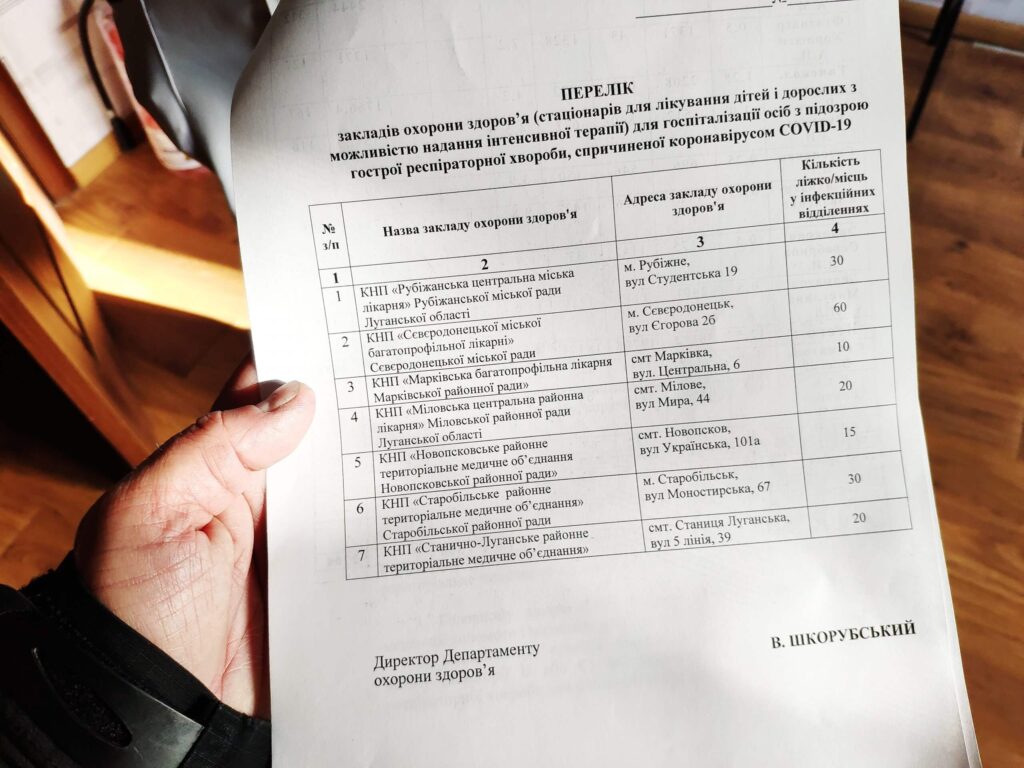
2.8 Misrepresentation of the actual state of preparedness for the coronavirus epidemic by government agencies
According to the observations of the monitoring group, the official data provided by the representatives of the Luhansk regional state administration do not correspond to the information obtained during the field research directly from the staff of medical institutions. According to the members of the mission the degree of epidemic preparedness of medical institutions is significantly overestimated, which prevents public authorities, commercial and civil society sectors from understanding the real state of affairs and providing necessary assistance.
Not all health facilities are identified as reference for the admission of patients with COVID-19 symptoms, able to provide the necessary assistance to all those affected by COVID-19. For example, to the list of supporting institutions included the Central district hospital in Stanytsia Luhanska, although hospital staff, in their communication with the monitoring team on March 22, categorically stated that the facility was not ready to accept patients with COVID-19 symptoms. According to them, the hospital is not equipped with the necessary medical staff, does not have specially equipped beds and necessary equipment. However, on March 24, we received information and documents confirming the inclusion of the hospital in Stanytsia Luhanska to the list of care facilities, which should accommodate at least 20 patients. In addition, during a briefing on March 24, Head of Lugansk Regional State Administration Sergei Gaydai stated that one of the patients suspected of coronavirus had already been admitted to the infectious ward to the Central Regional Hospital in Stanytsia Luhanska.Not all health facilities identified as designated to receive patients with COVID-19 symptoms are able to provide the necessary assistance to those infected with COVID-19. For example, Stanytsia Luhanska Central District Hospital was included on the list of designated medicated institutions, although hospital staff, in their communication with the monitoring team on March 22, categorically stated that the facility was not ready to receive patients with COVID-19 symptoms. According to them, the hospital is not equipped with the necessary medical staff, does not have specially equipped beds and necessary equipment. However, on March 24, we received information and documents confirming the inclusion of the hospital in Stanytsia Luhanska to the list of healthcare facilities, which should accommodate at least 20 patients. In addition, during a briefing on March 24, the head of Luhansk regional state administration Sergei Gaydai stated that one of the patients suspected with coronavirus had already been admitted to the infectious unit to the Stanytsia Luhanska Central Regional Hospital.
Not all health facilities are identified as reference for the admission of patients with COVID-19 symptoms, able to provide the necessary assistance to all those affected by COVID-19. For example, to the list of supporting institutions included the Central district hospital in Stanytsia Luhanska, although hospital staff, in their communication with the monitoring team on March 22, categorically stated that the facility was not ready to accept patients with COVID-19 symptoms. According to them, the hospital is not equipped with the necessary medical staff, does not have specially equipped beds and necessary equipment. However, on March 24, we received information and documents confirming the inclusion of the hospital in Stanytsia Luhanska to the list of care facilities, which should accommodate at least 20 patients. In addition, during a briefing on March 24, Head of Lugansk Regional State Administration Sergei Gaydai stated that one of the patients suspected of coronavirus had already been admitted to the infectious ward to the Central Regional Hospital in Stanytsia Luhanska.
Recommendations
The government should leverage resources from the commercial and civil society sectors, especially if it does not have the resources to provide the healthcare facilities with everything they need for the effective response to the coronavirus epidemic. But by misrepresenting information about the real state of affairs, about the causes and manifestations of problems, the state government limits the ability of non-governmental institutions to understand the needs and effectively allocate resources they are willing to in order to provide assistance in the fight against the epidemic.
The Ministry of Reintegration of Temporarily Occupied Territories should monitor the healthcare facilities located along the line of contact, and ensure the necessary personnel, medicine, medical and protective equipment.
Understanding the need to counteract the spread of panic, we strongly recommend the public administration at the regional and national levels not to misrepresent information about problems and involve the active part of Ukrainian society for a discussion of effective strategies to counteract the pandemic and its negative economic and social consequences.

3. Conclusions and recommendations
The healthcare system of the Luhansk region is not ready to stop the spread of COVID-19 in case the speed and scale of the epidemic reach Italian indicators.
As far as we can understand, the Ukrainian authorities do not have the resources to quickly improve the situation. The situation can only be solved by the general mobilization of society and the rapid establishment of cross-sectoral interaction. In this situation, public authorities should change their monopoly role to a coordinating function and invite representatives of other sectors to cooperate and support with resources for joint actions aimed at localizing the epidemic. To do this, the authorities should abandon the practice of silencing the real state of affairs in the medical and related fields. The public administration should recognize the problems of opacity and lack of management skills and should be prepared to implement non-standard strategies offered by professionals from other sectors.
In order to prevent the recurrence of such a crisis, the active part of society in the region should continue to monitor the distribution and use of state and local budgets allocated for the maintenance and development of the medical sector.
Epilogue
The monitoring group and the entire staff of the Vostok SOS Charitable Foundation are expressing their respect and support to all medical professionals who, despite such difficult conditions, remain committed to their cause and maintain the leading defense against an epidemic that threatens thousands of our citizens. We are proud of you and are ready to give you all the help we can.
Abbreviations used in the text:
- PPE – Personal protective Equipment
- PCR – Polymerase Chain Reaction
Composition of the monitoring group:
- Kostiantyn Rieutskyi
- Yuliia Krasilnykova
- Yevhen Vasyliev
- Yevhen Bondarenko
- Daniil Popkov
Download the full PDF report
View the full report online
For more information, please call:
+38 093 145 57 88
[email protected]

